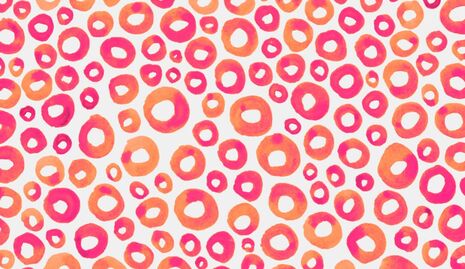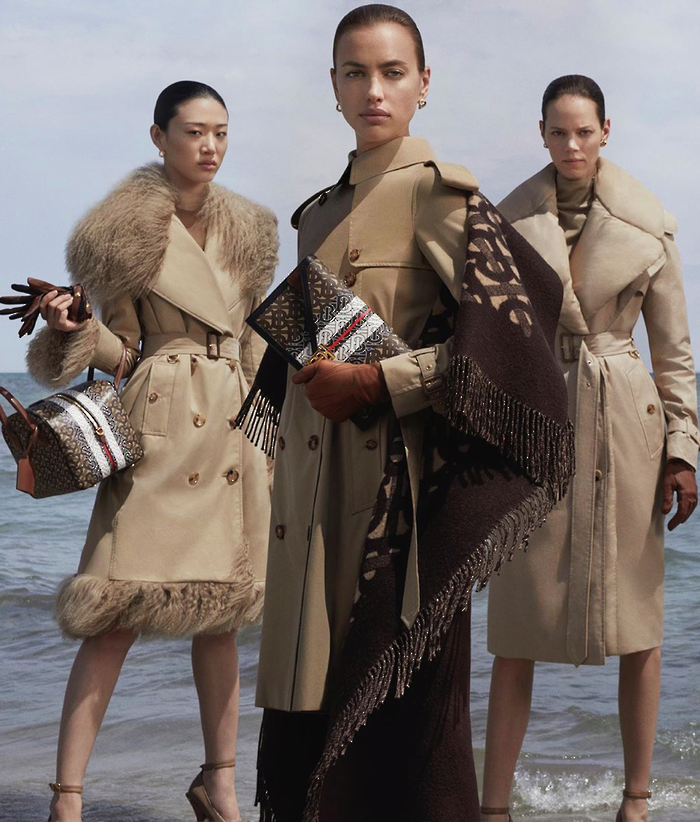Breaking the binaries of fashion
Reconciling inflexible expectations and harsh reality is a lengthy and tricky process, but one that is worth it, tells an anonymous student.

Content Note: This article contains detailed discussion of body dysmorphia and anorexia
Growing up I was always aware that I didn’t quite connect with my body. As I aged, a feeling of “not quite right” developed into a deep hatred of my physicality. Broad shouldered, small waisted, and with a face that treads the lines between the traditionally feminine and masculine, I was an hourglass figure with a V-taper: androgynous, uncategorizable. Unable to fit myself neatly into the well-defined boxes of the masculine or the feminine at what felt like the most basic of levels, I spent most of my teenage years attempting to mould my body into something that I had been trained to believe would be more acceptable, more palatable, less mine.
For me, fashion was something that reinforced everything I both was and wasn’t; I was left crying in changing rooms more times than I really want to admit. I distinctly remember being 16, traipsing a shopping centre for hours, on a desperate search for a suit to wear to college.
Every shop I entered told the same story: my body was just the wrong shape. Stood in one store’s changing room under fluorescent lights, I stared at my reflection. Five, ten, fifteen minutes rolled into one in my own personal purgatory as, dressed in an ill-fitting suit, I picked apart every single part of my body. This wasn’t the first time I had dissected myself, and it wouldn’t be the last. However, it remains the most vivid in my memory because it was at that moment that I promised myself I would change; I wish I could say that meant I would work on my self-esteem, or confidence, or anything non-material at all really, but sadly it didn’t. To change meant to shrink, because in my mind to shrink meant to fit.
From that moment on, I combined unhealthy habits with an “if my body isn’t visible it doesn’t exist” approach to fashion. Oversized trends became my best friend as I tried to drown myself in layers, hiding every aspect of myself from the outside world in a desperate attempt at “acceptable”.
“Changing room lights no longer presented scrutiny, instead they illuminated possibilities I had never thought could be mine”
However, it was also at this point that I began to experiment. Closed off in the safety of my bedroom I would spend hours on my laptop scrolling through page after page of high, vintage, and second hand fashion websites. With each page I imagined a new version of myself. Tuxedo trousers here, a new romantic blouse there. Idea after idea, inspiration after inspiration, I began to dream about the person I could be, each refreshed page a new version of the same frame. For two years I followed this same pattern and it was during this time that, steeped in the ideas of others, imagination and inspiration of my own began to swirl around inside my head and eventually out onto the page. I sketched piece after piece, experimenting with silhouettes from every era: frock coats and flowing gowns jammed together in eclectic sketchbooks of designs, each piece another combination of the traditionally masculine and feminine.
These dreams and designs remained just that, figments of the most adventurous parts of my mind until I reached university, when, free from my extremely conservative hometown, I first crossed the gender divide in Topshop. Suddenly, clothing styles I long had admired from afar opened up to me, a whole new world of clothing cuts unfurling before my eyes. It wasn’t that I didn’t know they existed – after all, I had been designing with these aspects for years, but this was the first time I saw them as being available to me.
I picked up items that excited me; changing room lights no longer presented scrutiny, instead they illuminated possibilities I had never thought could be mine. Under these lights that had mocked me for years I found clothes that fit. By breaking through the binaries of fashion I had found clothing that made me feel comfortable, collected, and maybe even a little bit... cool? The binaries of “acceptable” and “unacceptable” that I had long held in my head began to unravel. No longer was my body a freakish object to be contorted into ill-fitting clothing – it was just a body. In cutting the invisible tape of the fashion binary, I found myself free from the cruel constraints I’d placed on my own appearance.
I won’t pretend it was an instant transformation, this was no ’00s coming-of-age film and I am no Mia Thermopolis, but it was a transformation nonetheless. Topshop marked a turning point for me, heralding in an age of gender non-conformity. It gave me the confidence to begin stitching my androgynous dreams into a reality.
Trawling various charity shops, second-hand stores, and VSCO girls' favourite app, Depop, I began to search for unwanted items that fit the person I wanted to become. Some fit straight away, working with my body in all the ways I had spent years hoping they would. Others required small amounts of tailoring, and a few – my favourites – were pieces I ripped and flipped into whole new garments, often spending my evenings patching, recutting, and dying entire moth-eaten suit jackets into more avant-garde androgynous pieces. Not only had breaking binaries freed me from physical constraints, but also from creative ones. I was no longer someone who fantasised about designing: I was a designer.
Changing my conceptualisation of binary fashion changed my creative abilities, but more than that, it facilitated the growth of a reticent friendship between my body and mind, the cruel criticism I subjected myself to in the past now a relic of my teens. That is not to say my body and I don’t still have a strained relationship, we do, but no longer is it a relationship marred by a hatred of a figure which is simply not up for negotiation.
 News / Caius mourns its tree-mendous loss23 December 2025
News / Caius mourns its tree-mendous loss23 December 2025 Comment / Yes, I’m brown – but I have more important things to say22 December 2025
Comment / Yes, I’m brown – but I have more important things to say22 December 2025 News / Cambridge welcomes UK rejoining the Erasmus scheme20 December 2025
News / Cambridge welcomes UK rejoining the Erasmus scheme20 December 2025 News / CUP announces funding scheme for under-represented academics19 December 2025
News / CUP announces funding scheme for under-represented academics19 December 2025 Interviews / Politics, your own way: Tilly Middlehurst on speaking out21 December 2025
Interviews / Politics, your own way: Tilly Middlehurst on speaking out21 December 2025










